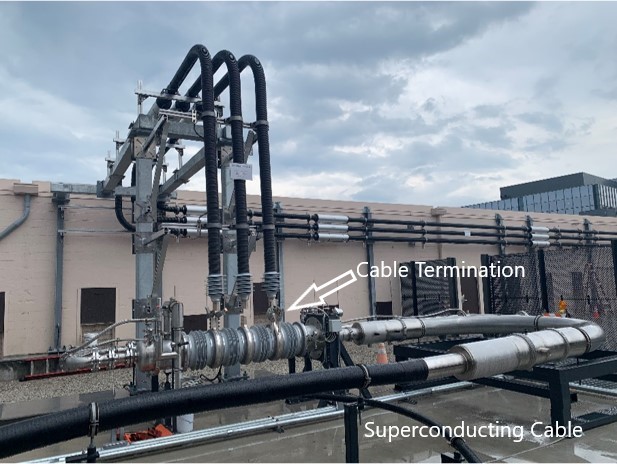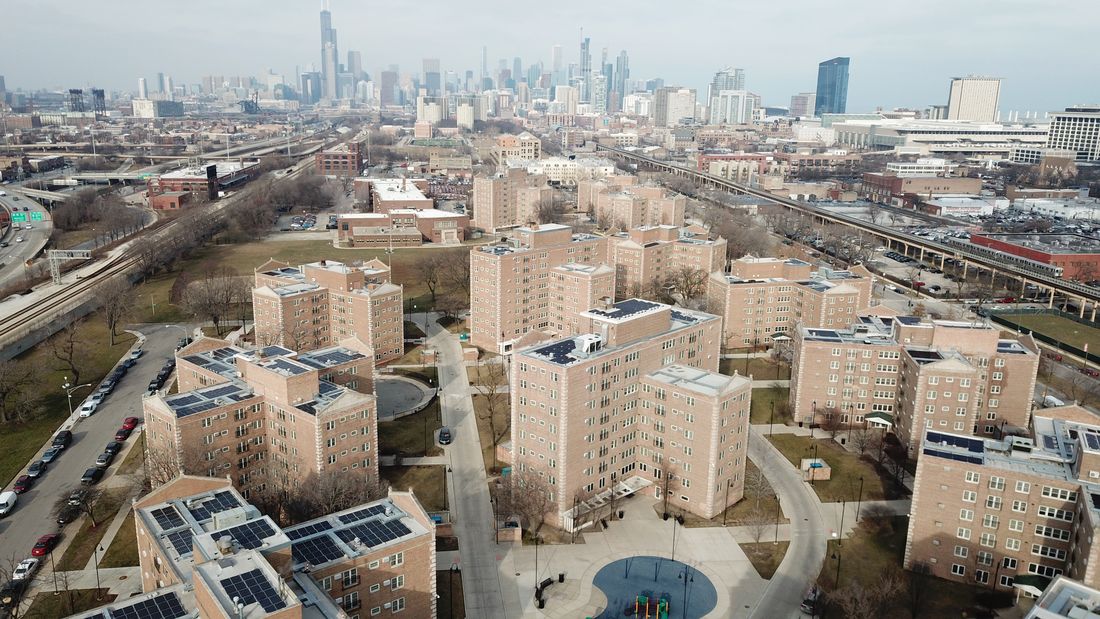Transforming our Grid
The electric utility industry is facing unprecedented change. As efforts to deploy distributed energy resources accelerate, the interconnection and integration of these resources becomes ever more central to grid operation and investment. At the same time, we see new loads coming online to electrify transit, buildings, and industry, adding new dimensions to an already complicated metamorphosis.

by Terence Donnelly
President and COO of ComEd
Motivations: Climate Realities and Decarbonization
The changing configuration of the energy system poses operational challenges for utilities, but the effort to overcome those challenges is justified by benefits accruing to customers. Last year, ComEd’s service territory was hit by a derecho storm generating more than a dozen tornadoes, which resulted in almost 800,000 customer interruptions. As our crews successfully respond to increasingly severe and frequent storms, we see the urgency of grid investments that will help to mitigate climate change and to respond to the storms to come.
In northern Illinois and Chicago, ComEd is facing these challenges head on. Over the past decade, we’ve transformed the distribution grid to improve reliability and system performance. Reliability improvements are paying dividends in community benefits, fostering resilience and sustainability across our territory.
State and federal policymakers have recognized the role of a clean energy system in resilience, decarbonization, and job creation. The infrastructure bill that the US Senate has passed includes support for investments to promote grid resiliency and flexibility. The legislation promises to be a significant driver of grid investments. In many parts of the country, state legislation is providing additional support for clean energy resources and a roadmap for advanced grid capabilities. Here in Illinois, the Governor signed into law a landmark clean energy bill that establishes new ambitious beneficial electrification programs and expansion and retention of clean energy generation in the state. Clean air, a stable climate, and social welfare are central objectives of this legislation.
Decarbonization is the key to avoiding the most pernicious impacts of climate change, and the grid is the prime enabler of mass-scale decarbonization. The grid must be prepared to serve all the essential loads that are currently reliant upon fossil fuels. This work will define electrical distribution for decades to come.
Grid Challenges
Integration of clean energy resources including electric vehicles poses a series of challenges to traditional utility infrastructure. When we talk about “integration”, we imagine a grid that goes beyond interconnection of advanced energy resources. Fully integrated technologies function in concert with other grid equipment, sustaining grid operations, responding to grid conditions, and communicating fast enough to protect our customers, crews and equipment.
The realization of full integration will take time. Electric utilities have been integrating technologies for over a century and it is a core competency. Right now, we need to focus on integrating the necessary technologies onto the grid with a planning and operational approach. The increasing penetration of distributed energy resources (DER) may challenge relay protection coordination, exceed transformer capacity and cause phase imbalance. Intermittent renewables and stochastic EV charging further complicates the daily work of distribution system operators and belies standard load forecasting approaches. As DER penetration increases, transmission operations can also be impacted, posing new coordination challenges to transmission-distribution operation teams and industrial simulation software.

ComEd Grid Integration and Technology Lab
Solutions: Strategic opportunities for grid design and adaptation
Grid challenges can only be overcome by successfully integrating complex and dynamic system components. ComEd is working to develop and demonstrate a portfolio of technologies that have the cumulative capabilities necessary to guarantee visibility into system performance, efficient utilization of available capacity, increased resiliency, power quality, grid modularity and speed. The best hope for success comes from partnerships across the industry with the U.S. Department of Energy, the Department of Homeland Security, National Science Foundation (NSF), IEEE Power and Energy Society, key vendors, universities, national labs and industry researchers. ComEd’s portfolio of 18 federally funded projects is an example of what allows us to leverage DOE, DHS, and NSF resources to learn as a team.
When it comes to system visibility, sensors will play a critical role in risk mitigation as new equipment and configurations are brought onto the system. We look to advanced sensors like phasor measurement units (PMUs), line sensors, and our new ComEd-developed, DOE-sponsored intelligent sensor platform, or SIMPLE™ to demonstrate the further enhancement of this capability. These sensors are able to leverage the advanced communications infrastructure that ComEd is deploying to establish secure, low-latency connections for capabilities such as distribution automation schemes.
Sensors also inform software systems that can automate interactions with grid assets. ComEd is demonstrating distributed energy resource management system (DERMS) projects that provide new options for customers. In one deployment, we use software to maximize the utilization of available DER hosting capacity. Without this software, substantial grid upgrades would have been required at considerable cost, to bring three solar farms onto a distribution network with several wind farms already interconnected. The first installation of this DERMS went live on April 1st, 2021 and the next month it successfully managed DER output to support system safety while adhering to equipment capacity constraints. Additional DERMS deployments are planned to manage power quality from PV output and to coordinate a battery system that participates in the frequency market. We anticipate an Advanced Distribution Management System (ADMS) that will track system conditions and respond in automated ways. DERMS demonstrations are building capabilities that we will unify within a software layer extensible to many different use cases.
While grid investments necessarily involve long-term planning, we must also anticipate events for which there is little time to plan. Emergency response is a core function of every utility, and the rising tide of extreme weather events makes these activities much more significant. ComEd has engaged a wide range of stakeholders for major storm preparedness. This initiative involves careful planning to prepare for worst-case scenarios and extensive use of analytics. Our data analytics team has deployed advanced weather sensors to improve storm prediction and outage recognition. We have used advanced analytics to identify system vulnerabilities so that they can be hardened in advance of a storm and for conducting N-1 contingency analysis and other scenario planning. ComEd recently ran a simulation with key stakeholders to anticipate microgrid emergency response capabilities and to make best use of advanced resilience capabilities.
In September, the U.S. Department of Homeland Security (DHS) and the U.S. Department of Energy joined us for the unveiling of a technology that will enhance resilience for ComEd customers and reduce the impact of cyber and physical threats. Developed by the American Superconductor Company and funded in part by the DHS Science and Technology Directorate, the Resilient Electric Grid system (REG) uses a high-temperature superconductor wire that can carry 200 times the power of standard copper wire and provide self-healing capability. ComEd is the first utility in the nation to permanently install AMSC’s REG system into the grid.

Superconductor
Our initiatives continue to line up with our core responsibilities such as maintenance, new construction and engineering but the character and form of the work is changing rapidly. Customers and policy makers are demanding new standards of performance across multiple dimensions of clean, resilient, safe, secure and affordable. New systems require our engineers and crews to develop new skills and competencies and to revise established practices. Many new systems require testing. That’s why we recently built a state-of-the-art lab to conduct extensive testing of advanced technologies to ensure their safety and effectiveness before being tested by the harsh realities of large power grids serving millions of customers.
Our microgrid demonstration project, in concert with the DOE and over a dozen partners, incorporates multiple components that were first tested in our lab. For instance, the microgrid integrated solar storage technology was lab tested along with the microgrid master controller prior to field deployment. The benefits of these technologies are clear. The Bronzeville Community microgrid directly serves more than 1,000 residences, businesses, and public institutions from the ComEd grid, including 11 customers that provide critical public services. The utility-operated microgrid cluster was designed and deployed to maximize community benefit; it also informs how we can deploy technologies to integrate DER and provide higher levels of resilience across our service territory. Through these projects, we are learning as part of a community of partners.

Bronzeville Solar
Conclusion
The electrical grid of the future cannot be provided by the technologies of today. As an industry, we must continue to draw on our history of integrating new technologies and making things work in the real world that powers our lives 24X7.
The global deployment of the electric grid produced incalculable benefits, improved the lives of billions, and increased access to economic, medical, educational and cultural opportunities that were once only accessible to the very few. Now, the bar has been raised in a big way, driven by climate change and other threats such as cybersecurity. As we transform to meet these challenges, our industry is poised to deliver on a new era of power, achieving new standards of safety, reliability, resilience and sustainability. This new era of power will energize a future we all want, a future accessible to all.

